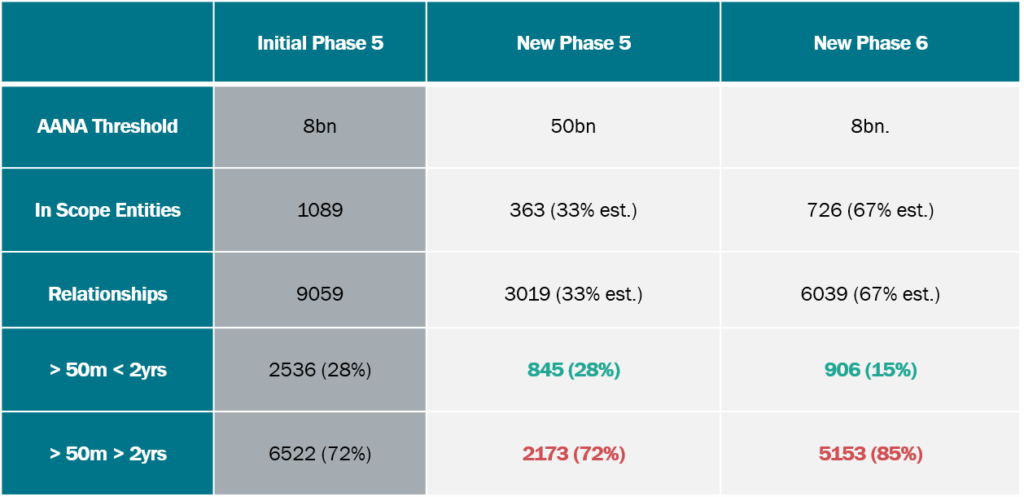IM- the breakdown (averted)
(Last updated: )
As expected, ISDA have communicated a more granular breakdown of estimates for the likely population of the new IM phases 5 and 6, via relevant working groups. These have been replicated and published by a number of third party firms. Although all the numbers are estimated, there seems to be both a lack of mathematical rigour and some confusion between the population and threshold estimates.
To clarify- the estimates are as follows:
- Initial in-scope population (old Phase 5) population of 1089
- One third will be > 50bn. AANA therefore in new Phase 5. Of this population 28% will cross the 50m exposure threshold within two years.
- Two-thirds will be < 50bn. AANA therefore new phase 6. Of this population 15% will cross the 50m exposure threshold within two years.
There have been two forms of mitigation recommended by BCBS\IOSCO:
- March 2019. IM arrangements do not need to be put in place until the 50m exposure threshold is breached. Expectation to “act diligently” in advance
- July 2019. Phase 5 to be split into two. AANA > 50 bn. To comply by 1 September 2020. AANA > 8 bn. To comply by 1 September 2021

We can see from the table above that the two forms of mitigation are estimated to work well together. The new phase 5 is likely to require 845 relationships to be documented by the deadline, phase 6 likely 906, totalling 1,751 by 1 September 2021. Note that the “within two years” metric currently has no regulatory force, and does not indicate any degree of enforced “diligence”.
The original (probably impossible) phase 5 has effectively been cut by 80% and spread over two years. IM Phases 1-4 have certainly been challenging, but have been successfully completed in-house and by experienced third party firms. The new Phase 5 and 6 numbers still represent a significant challenge, one exacerbated by the approaching storm of benchmark reform, but they are possible.
For the post-2 year, remaining sub-threshold majority; a new, onerous obligation has been added- to continually monitor your AANA and threshold-approach. One Big Bang has been converted to two smaller and a long tail of “new BAU”.
What does it mean for you?
- If you are already preparing for the now-superseded Phase 5- stay ahead of the herd and continue to complete documentation and custodian arrangements.
- If you are likely to be caught in the new phase 5- the situation is unchanged. Time and resources will still be short.
- If you are likely to be caught in the new Phase 6- get ahead by putting documentation in place now. Use the “extra” time to assess collateral optimisation.
- If you are likely to be past the Phase 6 threshold, put processes in place to monitor your AANA. Assess whether it might be less onerous to put arrangements in place, to be activated as the threshold is approached.
The dual mitigation is still a recommendation rather than Regulatory fact and we await details of its final, implemented form(s). However, in combination it should prove to be both effective and pragmatic, achieving Regulatory aims whilst accommodating to possibility. Although the industry will continue to advocate for mitigation; the likely success of the new structure, combined with its lack of recourse to alteration of primary legislation, makes the prospect of further adjustment highly unlikely.
The mitigation is neither pardon nor reprieve, and is a delay for only some. Phase 1-4 entities have more time to communicate the intricacies of IM to the majority of their clients and perhaps trim their triage lists. Those already (or likely to be) in scope for phases 5 and 6 should continue with their preparations. Those who will be in the AANA-monitoring cycle should begin preparing.
Contact Us